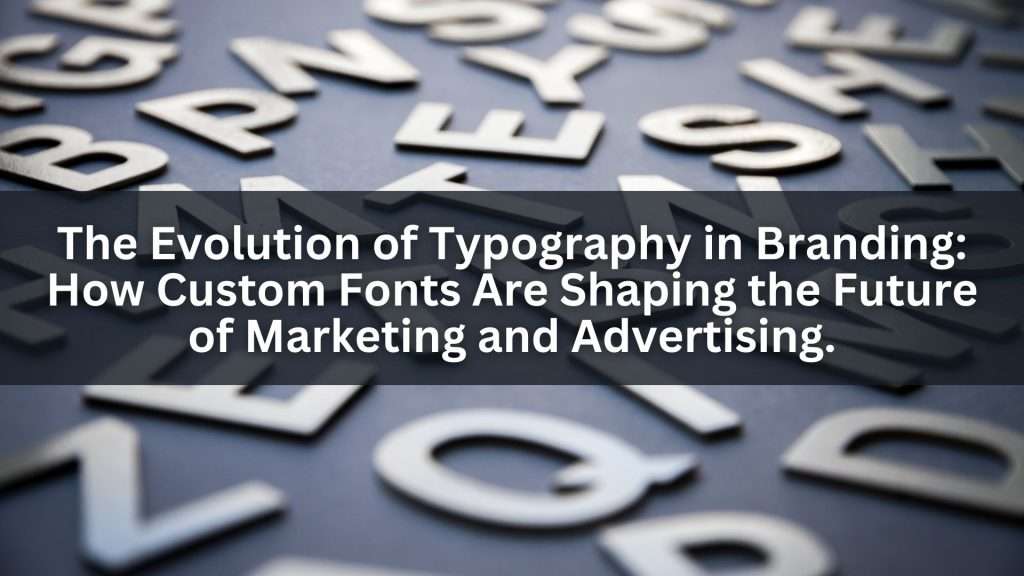Typography has evolved from a functional necessity to a vital element in branding and advertising, shaping how audiences perceive and connect with brands. In today’s digital age, where visual identity is paramount, the choice of typeface can significantly influence a brand’s narrative and emotional appeal.
The Historical Significance of Typography in Branding
The journey of typography in branding began in the late 19th and early 20th centuries, coinciding with the rise of advertising and marketing sophistication. During this era, artists like Alfons Mucha introduced distinctive styles, such as Art Nouveau, to create standardized and recognizable brand communications. Typography became a tool to convey a brand’s personality, tone, and vision, acting as the visual voice that communicates directly with the audience
The Emergence and Impact of Custom Typography
In recent years, there has been a significant shift towards custom typography in branding. Brands are increasingly investing in bespoke typefaces to establish a unique identity that resonates with their target audience. This move towards custom fonts allows brands to differentiate themselves in a saturated market, offering a tailored visual language that aligns with their core values and messaging.
Typography Trends Shaping Branding in 2025
As we navigate through 2025, several typography trends are influencing branding strategies:
Bespoke Typefaces with Emotional Resonance: Brands are crafting custom fonts that evoke specific emotions, enhancing storytelling and creating deeper connections with consumers.
Variable Fonts for Flexibility: The adoption of variable fonts allows for dynamic adjustments in weight, width, and other attributes, ensuring consistency across various platforms and devices.
Handwritten and Humanistic Styles: There is a growing preference for handwritten fonts that convey authenticity and a personal touch, making brands appear more approachable and relatable.
Retro and Neo-Retro Revivals: Designers are drawing inspiration from past eras, reintroducing vintage styles with modern twists to evoke nostalgia while maintaining contemporary relevance
Playful and Bold Typography: Brands are embracing bold and unconventional typefaces that capture attention and convey a sense of fun and creativity.
The Role of Typography in Digital Branding
In the digital space, typography plays a crucial role in user experience and brand perception. With the rise of responsive design, fonts must adapt across various screen sizes and resolutions. Moreover, kinetic typography, animated text that captures attention, has become a powerful tool in digital advertising, enhancing engagement and conveying messages dynamically.
Typography as a Brand’s Visual Voice
Typography is more than just a design element. It is a fundamental component of a brand’s identity. The strategic use of fonts can convey a brand’s essence, differentiate it in the marketplace, and foster emotional connections with the audience. As typography continues to evolve, embracing new trends and technologies, it remains an indispensable asset in crafting compelling and memorable brand narratives.
Future of Typography:
Typography has evolved from the rigid constraints of metal type and print to become a responsive, strategic, and emotionally driven design tool. In the early 20th century, sans-serif fonts like Helvetica and Futura symbolized modernity and minimalism, dominating corporate branding. The digital revolution brought a surge of web-safe fonts, but also the rise of custom typefaces, tailor-made to express a brand’s voice with distinctiveness and coherence across platforms. Typography is now entering a hyper-customized, tech-integrated era. Variable fonts are already enabling a single file to morph in weight, width, and slant, creating fluid design across screen sizes without losing brand consistency.
In the near future, we will likely see AI-assisted typography tools that generate font suggestions based on a brand’s tone and audience behavior. Augmented reality (AR) will make fonts interactive, allowing users to engage with type in 3D space, while motion typography will become integral in video-first platforms like YouTube shorts and Instagram Reels. Even in e-commerce, smart typography will adapt in real time, changing tone, size, or emphasis based on consumer behavior or location. These innovations will shift typography from a static visual to an adaptive, living component of brand storytelling.


